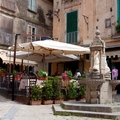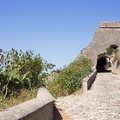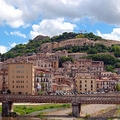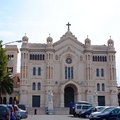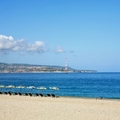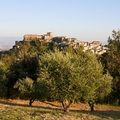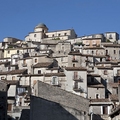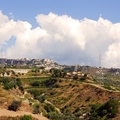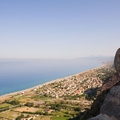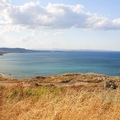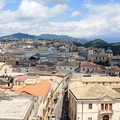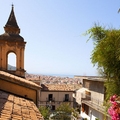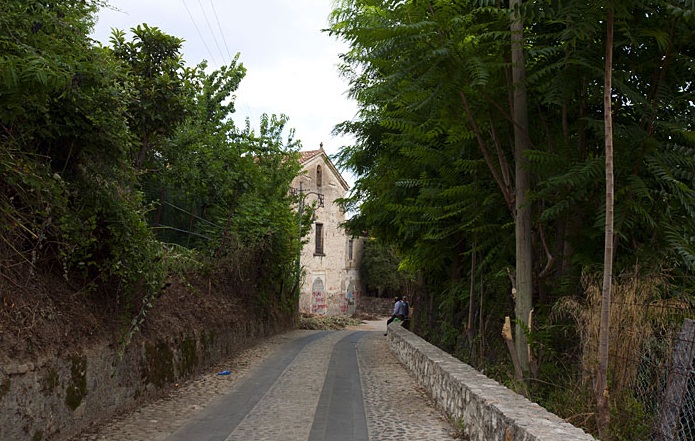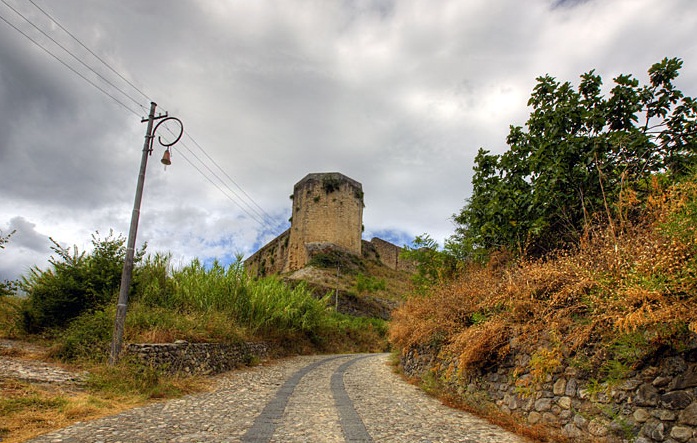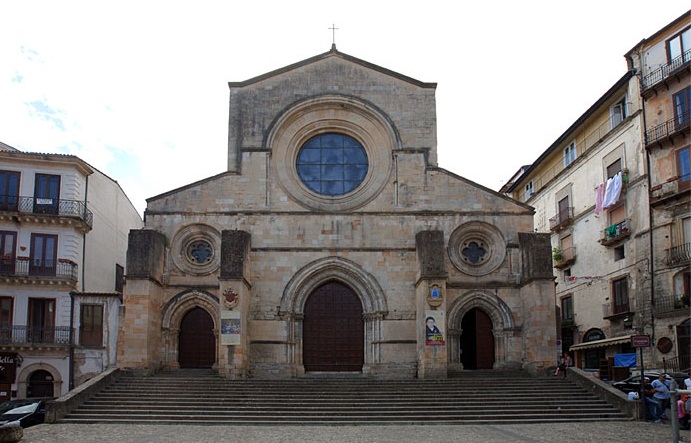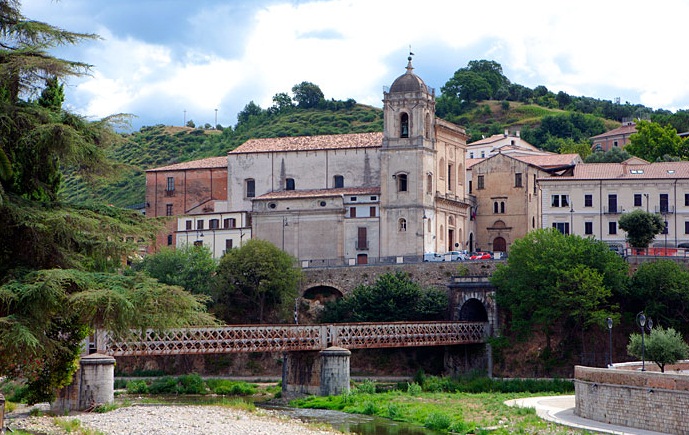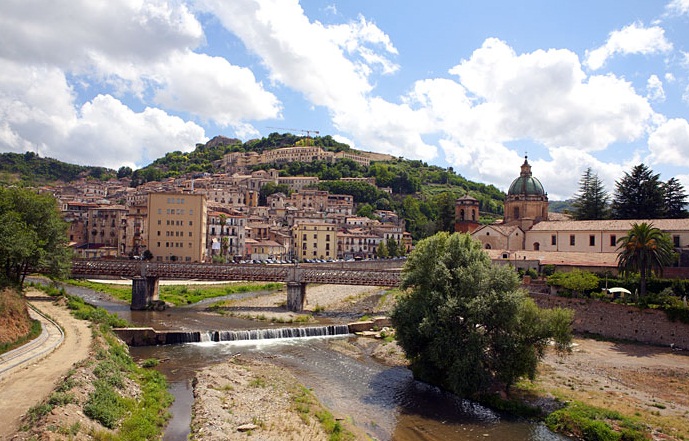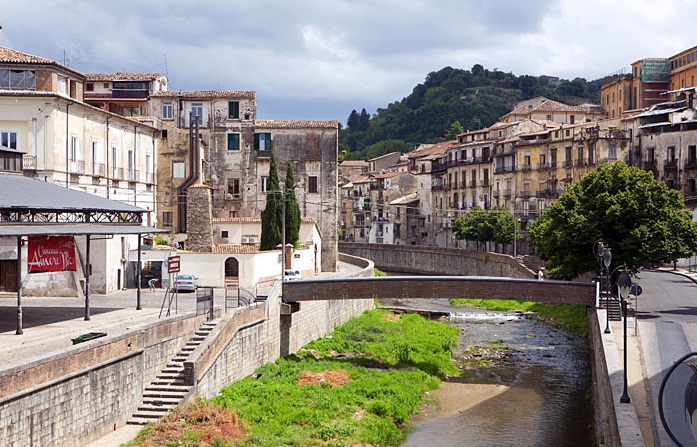Destinations / The Best Places to Visit in Calabria, Italy / Cosenza
Cosenza
Description
The city of Cosenza in Calabria is the capital of the province of Cosenza, an ancient Italic tribe called it the city of the gross. Cosenza is one of the oldest towns in Calabria. Because of the cultural past Cosenza was called the "Athens of Calabria". Here is an art academy (second in the Kingdom of Naples and one of the first based in Europe).
History
The origins of the city lost in the IV. BC, when grosses lived in these lands , Cosenza (then called the city Cosentia) was their capital and the main city of the Latin Calabria. The city grew rapidly and soon became the metropolis, the capital of the vast territory, which controls nearly all the cities of Magna Graecia in Calabria, which fell under the onslaught of gross. However, neither the power of the city of Cosenza, nor the courage Gross could not resist the Romans. Cosenza has become one of the items on the Roman road leading to Reggio . New Dawn Cosenza experienced when the emperor came to power in August: from a military town turned into a commercial center. As long as the king of the Visigoths 410 AD Alaric decided not to fight for control of Rome . Rome was sacked, and Alaric headed for the south coast, hoping to sail to Sicily and North Africa. But a storm destroyed his fleet, and Alaric himself ill with fever and tormented by the fear that the gods punish him, retired in Cosenza, where he died and was buried according to tradition is ready at the bottom of the riverbed, where the rivers Busento and Cavallo meet. (The burial place of Alaric has not been found). The next period came in the dawn of the VIII and the IX centuries during the power of Lombards and Byzantines. During the wars of the Saracens and the Lombards Cosenza was virtually destroyed. The city rebelled against the Normans several times, but without apparent success. When the power came from the Emperor Frederick II Hohenstaufen kind, Cosenza has become one of his favorite cities and he helped to develop the city economically and culturally. And in the power of Cosenza Angevins came to poverty, desolation and banditry flourished. It was only when Louis III of Anjou and his wife decided to permanently reside in the castle and made the center of the duchy of Calabria and Cosenza came to the rise. When the power of the Aragonese dynasty came, Cosenza has become the capital of the Latin part of Calabria, which included most of the modern province of Cosenza. The Academy of Art was born in Cosenza during this period. In the XVI century Cosenza has remained a thriving and a cultural city and was called the "Athens of Calabria." During the Risorgimento Cosenza expressed freedom and patriotic views. On March 15, 1844 uprising, were inspired by the brothers Bandiera : Attilio and Emilio. The brothers were active fighters for the liberation of Italy from the Austrian yoke, in 1841 they created a secret organization "Esper" (which later became part of the "Young Italy"). Prior to that, the brothers have already attempted an uprising, which failed. Calabrian revolt was put down, too, on the denunciation of the traitor, the brothers were captured and shot. In subsequent years, the struggle for independence continued. While in the 1860 Cosenza has not acceded to the United Italy . At the beginning of the XX century Cosenza began to develop and grow, new homes and neighborhoods had been built. During the war, Cosenza was bombed by the end of the war came the decline and the destruction. But the economic boom has helped to quickly recover from Cosenza, the number of residents began to grow, but the historic center has remained rather neglected - people preferred to settle in the new city. On the coat of arms Cosenza has against the azure sky tower seven golden hills that guard the independence of the city on a green field and the two merging rivers.
What to visit
In the historical center of Cosenza survived many palaces and churches, narrow streets are woven into the maze and climb up the hill. Many houses and palaces destroyed by half create the impression of desolation. The cathedral was built in the XI century in the Romanesque style and was consecrated in 1222 in the presence of the Emperor Frederick II, but an earthquake in 1184 destroyed the facade. Later the building was repeatedly reconstructed and restored after the earthquake and the effects of time. Its present appearance Duomo acquired in 1831, and in 1981 was elevated to Sanctuary, which houses the ornate Madonna from Peeler, the patron saint of the city. Also in the cathedral is a wooden crucifix in the XV, the Funerary monument of France, Queen Isabella of Aragon, wife of Philip III, who died in Cosenza in 1271 the Queen returned to her husband from the failure of the Tunisian crusade. When passing through the river the horse stumbled the queen, Isabella and fell into the river. At this time she was seven months pregnant. The sarcophagus of Louis of Anjou was the Duke of Cosenza, the last of the Angevins, who lived here. Near the monastery is located the Blessed Duomo of the Virgin Mary (Chiesa e Convento di S. Maria delle Vergini). Here is an altar table in 1576 and the XIII century. A little further on is the church of St. Francis of Assisi (s. Francesco d'Assisi), which was founded in 1221. The church was rebuilt several times in the XVII century. It has acquired the features of the Baroque and in 1943, was severely damaged during the bombing. In the church of St. Francis of Assisi is stored in a wooden crucifix XV and XVIII century, a marble statue of the Madonna and Child with the XVI century, paintings of the artist Daniele Russo (1618) and others. Adjacent to the church of the former monastery complex you can see a beautiful courtyard. In one of the seven hills of the city rises the castle built by Frederick II, who was in love with Cosenza. According to the legend, in 1242 the castle imprisoned the son, Henry Frederick II Lame after he rebelled against his father. The Tuff castle was built in its plan in a rectangle with towers at the corners. In 1433 the castle housed the residence of Louis III of Anjou and his wife Margaret, daughter of the Count of Savoy Amadeus VIII. Later, there lived the King Alfonso of Aragon. In the XVI century staged in the castle prison, which in 1560 was in custody Calvinist Gian Luigi Pasquale, engaged in the missionary activity in Calabria. From 1630 began to decline, the earthquake destroyed the castle, the stones crumble and the towers collapsed. Now (2012) the castle is being reconstructed. The important church of Cosenza is also the church of St. Francis of Paola (Chiesa di S. Francesco di Paola). The church and the monastery were built in 1510, but in 1720 completely reworked the project Giovanni Cali. Within the preserved works of art of the XVI century include the works by Pietro Negroni "Madonna and the Child with joy" and "Saint Paul and Lucca." St. Francis of Paola, especially loved and respected in Calabria, since it is the only saint, which is home to the region. Born in the seaside town of Paola , St. Francis is the patron of sailors and Calabria, which helps them to cross the dangerous currents from the Gulf of Messina . The church stands not far from the merging of the two rivers, according to the legend, this was the tomb of King of the Visigoths of Alaric with countless treasures .But this is only a legend, nor the body of Alaric, nor his tomb has not yet been found. One of the two rivers in ancient times was called a "golden river", because it was a mine on the shores of gold and iron. According to an old tradition, the Calabrian women washed their hair in this river, if they wanted them to become of light golden color. The second river, on the contrary, made the hair darker. One of the most privileged of Cosenza churches after the Duomo is the Church of San Domenico built in 1449. It is decorated with Late Gothic rose window. In the church are the works of local artists and on the right side of the adjacent Dominican monastery. We can say that the church is on the border of the old and the new city.
Others from The Best Places to Visit in Calabria, Italy
The poet Gabriele d'Annunzio called the seafront in the town of Reggio di Calabria, "the most beautiful kilometer in Italy".
Underdeveloped industry and the lack of big cities for a long time, left the sea not polluted and Calabria is still considered a natural paradise.
Reggio Calabria, situated on the shore of the strait between Italy and Sicily is the largest and the oldest city in Calabria, numbering 3,000 years of history .
Here are the Botanical Gardens, the National Museum of Magna Grecia and the Aragonese Castle.
Also on the shores of both the Tyrrhenian and Ionian seas there are a number of smaller but picturesque cities with beautiful attractions.
In Tropez is the Santa Maria dell' Izola.
Siderno is known for its comfortable hotels.
Gerace attracts visitors for the Norman castle and its old cathedral.
Skuillache is a beach resort and a place of archaeological sites.
Style is home to the famous philosopher and the utopian Tommaso Campanella, the Norman castle and a Byzantine church.
The main resorts in Calabria are Tropea, Soverato and Scalea.
Resorts in Italy: Calabria (Tyrrhenian Sea) The ancient, harsh land with a rich history, Calabria in the 40-ies of the XX century was practically empty.
Most of the residents had left their native land and went to seek their fortune in northern Italy, America, Canada and Australia.
Italy's entry into the EU initiated the revival of Calabria.
And today, this is a very popular tourist destination.
Best time to visit is from June till September.
Calabrian coast is washed by two seas: the Ionian and the Tyrrhenian.
It has enough beaches for every taste: you can spend time in deserted hidden bays among rocks or hang out in crowded, well-equipped beaches, in the evening transformed into noisy discos.
The beaches on the Tyrrhenian coast are sandy, rather long, surrounded by small cliffs.
Ionian coast is solitary, small and rocky.
Besides the usual beach activities and water sports, you can do "historical adventure" diving.
Fans have the opportunity to examine the remains of 50 sunken ships off the coast, some of which relate to the IV century BC.
The Gioia Tauro It is a 3-mile sandy beach with small patches of gravel.
If you have sensitive feet, it is better to walk on the beach in flip-flops.
There are several bars, restaurants and showers on the territory.
Near the beach there are a few parking lots.
This is a rare beach not closed by rocks, so there is always a refreshing sea breeze blowing.
The Lipari Islands and the Cape of Capo Vaticano are visible from the shore of the island when the weather is fine .
The water is very pure.
The beach is not too crowded and very convenient for families.
Palmi Just as the Gioia Tauro, the Palmi beach is sandy and full with pebbles, sometimes not very pleasant when barefeeted.
The length of the beach is 1 km, the width 50 meters.
In summer it is literally dammed up people.
Free parking cars cannot contain all comers.
Palmi is surrounded by cliffs and approached by coast mountains, overlapping access to the wind, so the hot season here is too hot.
Tropea The beautiful sandy beach is included in the top 10 beaches in Italy of 2004.
It has fine, soft sand.
The length of the beach is of 500 meters, the width is of 30 meters.
During the season it is difficult to park nearby.
The coastal cliff overlooks the beach breeze from the sea.
The Capo Vaticano This is a 500-meter-long beach covered with soft clean sand.
Also, as Tropea, it is very crowded, not enough parking spaces.
Here come a couple and single holidaymakers, hoping to meet new people.
There are bars, restaurants, showers on the territory.
Scilla The classic sandy beach stretches for kilometers along the aquamarine waters.
Scilla is surrounded by cliffs, so here are extremely rare refreshing winds.
To escape from the heat, the sea or a few local bars can only be a solution.
On clear days you can see the coast of Sicily from here.
Reggio di Calabria This is a new bulk beach sand which was brought to the Gioia Tauro.
Rather narrow (25 meters), it stretches for kilometers and it is not too crowded.
The beach is opened to the breeze in bars, restaurants, showers, there are places for free parking.
Soverato The picturesque fishing village of Soverato is stretched by snow-white sandy beaches for a kilometer.
Here there is are "civilized" areas with bars, restaurants, lounges and showers, as well as more secluded corners where you can admire the sunset in the sea with an "intimate" setting.
Scenic views stretch along the beach promenade.
Plan to find housing? If we calculate the average prices for hotels, Reggio Calabria preserves an ancient Italian city.
This point is located in the southwest area of Calabria ( Reggio di Calabria ), at a distance of about 120 km from the town of Catanzaro .
Reggio Calabria is one in the far west of the city in the region.
This ancient city has a long and a rich history.
Obviously, the most important tourist attraction it is the Museo Nazionale Della Magna Grecia.
The Mediterranean Sea for tourists, of course, is a strong argument to choose the purpose of travel.
The number of inhabitants is about 180,000 people.
Reggio Calabria is an important port city.
From the terminal Metromare you can get to other interesting places on the Mediterranean cities, it appears that the Reggio Calabria is one of the five most expensive cities in the region.
Currently, the city can offer its customers a number of hotels and resorts.
Famous areas of the city are : Ravagnese , Pentimele , Archi and Gallico .
The reservation of the rooms is better done in advance.
Reggio Calabria Cheap hotels and accommodation in the district To navigate, you can see other cities in the vicinity.
Table of reference prices for accommodation in selected cities (average price per person per night).
Reggio Calabria and leisure opportunities Are you looking for ancient monuments? Milazzo Castle belongs to the most interesting objects.
Here you will be able to expand your knowledge of history.
Castello Ruffo Recreation and Relaxation Spiaggia di Scilla refers to such places in the county that can make your vacation unforgettable.
Enjoy water fun for your pleasure.
And if you look at the map, nearby you will still find other places perfectly suited for swimming.
Spiaggia di Scilla Reggio Calabria - Transport Removed from the City, the Airport Reggio Calabria (REG) at 4.
3 km: the road will take you only a few minutes of steam.
These constants are flying airlines, for example, from these points: International Airlines Reggio Calabria Airport.
What services do you provide here? If it happens that you get tired, take a break and will find for itself a cafe.
A nice little holiday will not hurt for sure ! Park your car and you will get no problems.
Services in the city and surrounding areas Reggio Calabria - rent, car rental, vehicle rental services Sure, it makes sense to rent a car, because everywhere in the district there are a number of places where you can go.
And what's more, so you save time.
Arrange in advance online a booking car.
Very often it comes money is more profitable than a service purchased on the spot.
Here you can see prices.
What is the best time to visit? This place is situated in the temperate zone.
The weather is usually very pleasant, with no large jumps in temperature.

